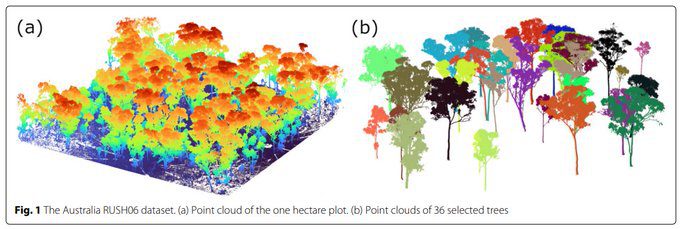AI and Laser Scans: A New Era in Forest Analysis
The integration of artificial intelligence (AI) with laser scanning technology has ushered in a new era of precision in forest analysis. A recent breakthrough in AI tools has dramatically improved the accuracy of tree extraction from laser scans, enhancing forest analysis accuracy by over 10%. This advancement is pivotal for environmental monitoring and forest management, providing more reliable data for conservation efforts.
How AI Enhances Tree Extraction
The new AI tool leverages advanced machine learning algorithms to process laser scan data more efficiently. By analyzing the intricate details captured in laser scans, the AI can distinguish between different tree species and accurately map their locations. This level of detail was previously unattainable with traditional methods, which often struggled with the complexity of forest environments.
Applications and Implications
The improved accuracy in tree extraction has significant implications for various applications. For instance, it can enhance the monitoring of forest health, assist in carbon credit verification, and support biodiversity studies. Accurate tree mapping is also crucial for managing forest resources and planning conservation strategies.
Comparative Advancements in AI and 3D Reconstruction
Similar advancements in AI and 3D reconstruction technologies are being seen in other sectors as well. For example, NVIDIA’s EdgeRunner, a game-changer in 3D mesh generation, uses mesh tokenization to compress sequence length by 50% and reduce long-range dependency between tokens, significantly improving training efficiency. This technology generates highly detailed 3D meshes with greater accuracy and efficiency, especially in challenging scenarios. More details can be found in the article on NVIDIA’s EdgeRunner.
AI in Landscaping and Construction
Another notable application of AI is seen in the landscaping and construction industries. Attentive.ai, an AI-powered business management platform, leverages AI and computer vision to automate tasks, improve efficiency, and reduce costs for landscaping and construction businesses. This platform includes tools for automated site measurements, sales and operations automation, and construction estimate generation. For more information, visit Attentive.ai.
Future Prospects and Ethical Considerations
The integration of AI in forest analysis and other sectors holds immense potential for future advancements. However, it also raises ethical considerations, such as data privacy and the potential displacement of jobs due to automation. It is crucial to address these concerns to ensure the responsible use of AI technologies.
Related Articles
- Mapping Tree Species with AI: A Global Initiative
- New AI Technology to Detect Road Defects in Dubai
- Top 7 Legal AI Tools for Law Practitioners
- Claude 3.5 Sonnet: A Leap Forward in AI Document Analysis
- Research Proposal Analyzer
Looking for Travel Inspiration?
Explore Textify’s AI membership
Need a Chart? Explore the world’s largest Charts database
